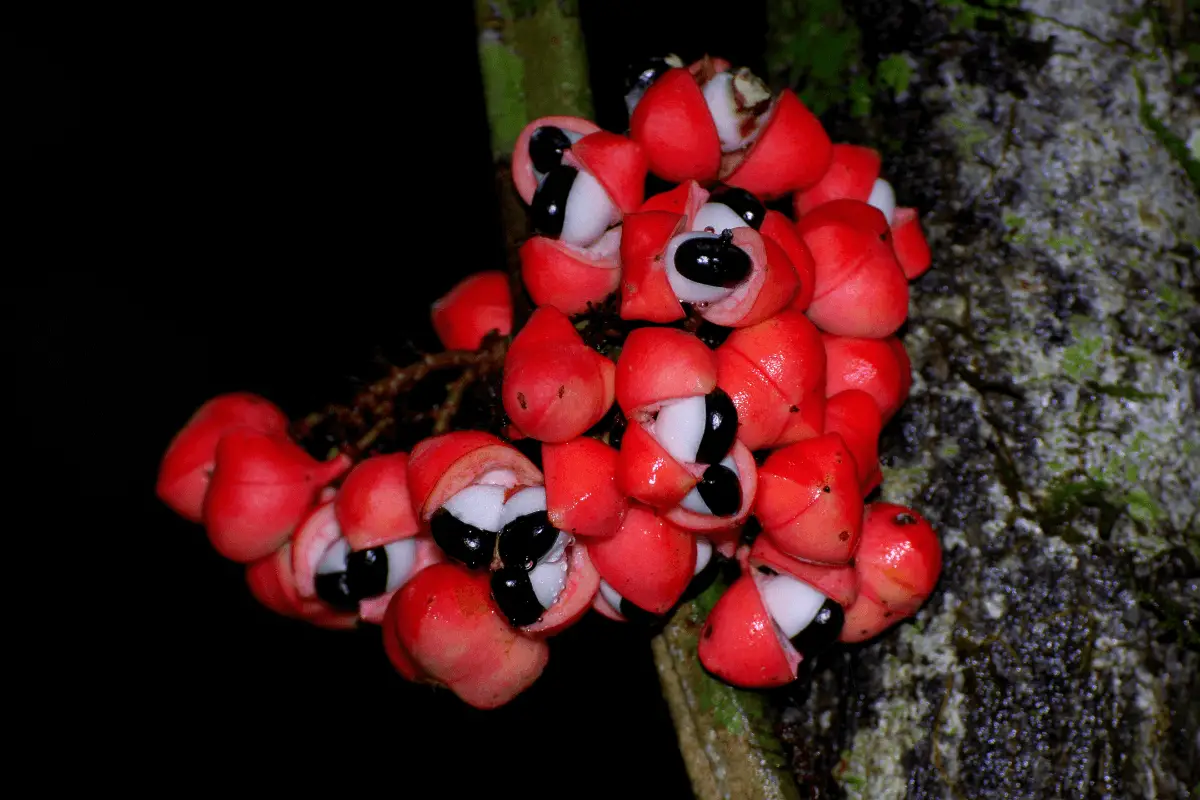TheHerbProf.com is a treasure trove of knowledge for those interested in natural healing and herbal remedies. The website is run by Paul Johnston MD. A naturopathic who has not only received extensive education in the field but also has personal experience in self-healing.
Guarana, also known as Paullinia cupana, is a plant native to the Amazon region. It has been used for centuries by indigenous tribes for its stimulating properties. The plant contains caffeine and other compounds that may provide various health benefits. It is commonly consumed in the form of energy drinks, supplements, and teas.
Paullinia cupana is best known for its ability to reduce fatigue and improve focus. According to a study published in the Journal of Psychopharmacology, guarana can improve cognitive performance and mood in healthy adults. In addition, it has antioxidant properties that may help protect against oxidative stress. However, it is important to note that excessive consumption of guarana can lead to adverse effects such as insomnia, anxiety, and high blood pressure.
Overall, guarana is a fascinating plant with a long history of use in traditional medicine. While it may offer some health benefits, it is important to consume it in moderation and consult a healthcare professional before using it as a supplement.
Guarana Historical Significance

Guarana has a rich history and cultural significance in the Amazon basin, where it has been used for centuries for its stimulating properties. In this section, I will discuss the origin and cultivation of guarana, as well as its traditional uses.
Origin and Cultivation
Guarana is a climbing plant that is native to the Amazon basin in South America. The plant is found primarily in Brazil, where it has been cultivated for centuries by indigenous tribes. The Sateré-Maué tribe, in particular, has a long history with guarana, and they are credited with domesticating the plant.
According to legend, the Sateré-Maué tribe was given the guarana plant by the gods as a gift. The plant was said to have the power to give strength and energy, and it was used in religious ceremonies and as a medicine. Over time, the tribe learned to cultivate the plant and developed a method for processing its seeds into a powder.
Today, guarana is still primarily grown in Brazil, where it is an important crop. The plant requires a warm, humid climate and well-drained soil, and it is typically grown in the shade of larger trees. The seeds are harvested by hand and then dried and roasted before being processed into a powder.
Guarana Traditional Uses
Paullinia cupana has a long history of use in traditional medicine and as a stimulant. The plant’s seeds are rich in caffeine and other stimulants, and they are often used to combat fatigue and improve mental alertness.
In addition to its stimulant properties, guarana is also used for a variety of other purposes. It is believed to have anti-inflammatory and antioxidant effects, and it is used to treat a variety of conditions, including headaches, fever, and diarrhea. It is also used as an aphrodisiac and to improve sexual function.
Overall, guarana has played an important role in the culture and history of the Amazon basin. Its stimulating properties have made it a valuable commodity for centuries, and its traditional uses continue to be studied and explored by researchers today.
Guarana Botanical Characteristics
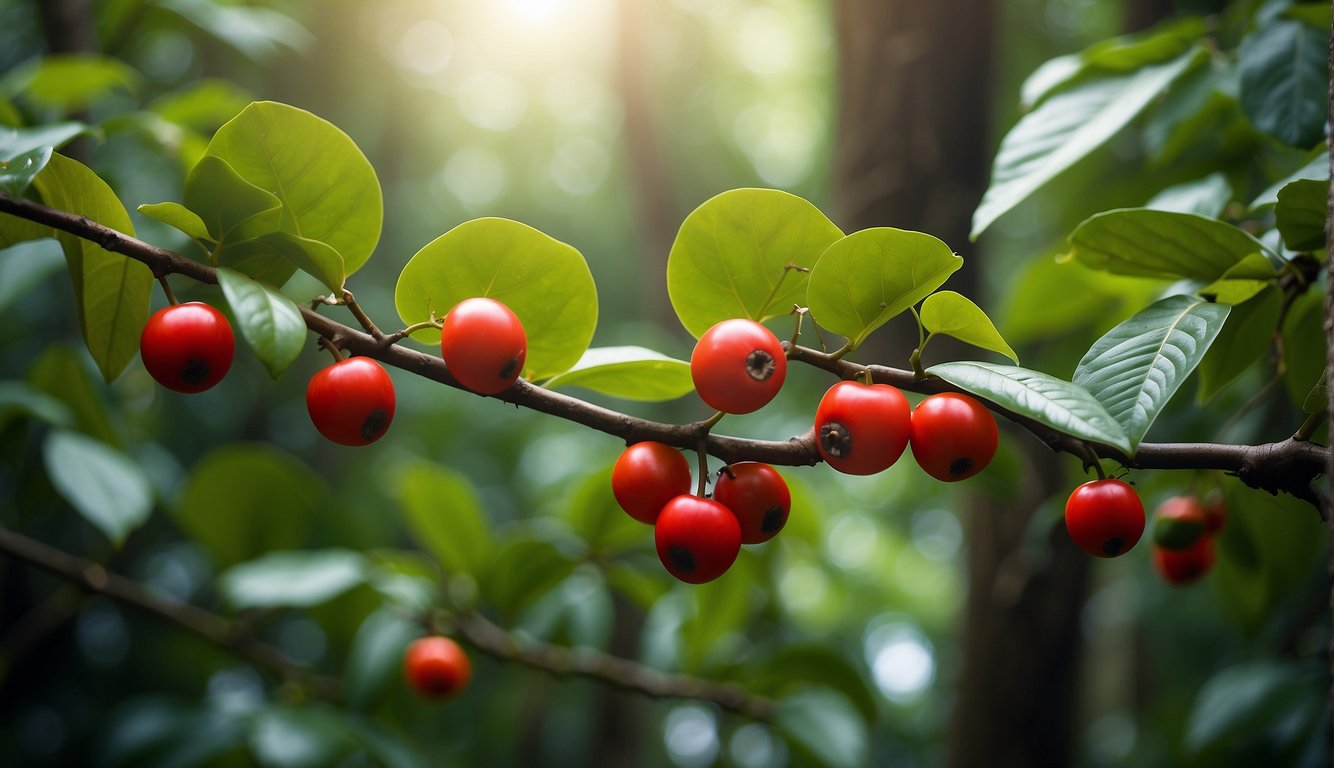
As a botanist, I find the Guarana plant fascinating. Guarana, or Paullinia cupana, is a climbing shrub and vine that grows in the Amazon jungle. Its stem is yellowish brown, long, woody, and flexible. This shrub can climb up to 10 meters high, making it almost impossible to harvest. The Guarana plant has large leaves with five oblong-oval leaflets and clusters of short-stalked flowers. The fruit of the Guarana plant is about the size of a grape and usually contains one seed shaped like a tiny horse chestnut.
Guarana Seed
The Guarana seed is the most important part of the plant. It is used for its stimulating properties and is commonly found in energy drinks, supplements, and weight loss products. The Guarana seed contains caffeine, theobromine, and theophylline, which are all natural stimulants. In fact, Guarana contains twice the amount of caffeine as coffee beans. The Guarana seed is also rich in antioxidants, tannins, and other beneficial compounds.
Plant Properties
The Guarana plant has many interesting properties. It is a natural appetite suppressant, which makes it useful for weight loss. It is also a natural energy booster, which makes it useful for athletes and people who need an extra boost of energy. The Guarana plant is also known for its cognitive benefits, such as improving memory, focus, and mental clarity.
The Guarana plant is a fascinating plant with many interesting properties. Its seed is rich in natural stimulants and antioxidants, making it a popular ingredient in energy drinks and supplements. The Guarana plant is also known for its appetite suppressant, energy-boosting, and cognitive benefits. As a botanist, I am excited to continue studying the Guarana plant and its many uses.
Guarana Health and Nutrition
As a nutritionist, I am often asked about the health benefits of guarana. Guarana is a tropical plant that is native to the Amazon basin. It is known for its high caffeine content and is commonly used in energy drinks and supplements.
Guarana Nutritional Profile
Guarana is a good source of several nutrients, including potassium, magnesium, and vitamin C. It also contains small amounts of calcium, iron, and zinc. A 1-ounce (28-gram) serving of Paullinia cupana seeds contains approximately:
- Calories: 101
- Protein: 3 grams
- Fat: 0.6 grams
- Carbohydrates: 22 grams
- Fiber: 4 grams
Antioxidant Content
Guarana is also a rich source of antioxidants, which are compounds that help protect against cellular damage caused by free radicals. In fact, studies have shown that Paullinia cupana contains higher levels of antioxidants than green tea.
One of the antioxidants found in guarana is theobromine, which is also found in chocolate. Theobromine has been shown to have a number of health benefits, including improving heart health and reducing inflammation.
Another antioxidant found in Paullinia cupana is theophylline, which has been shown to have anti-inflammatory and bronchodilator effects. This means that it may help improve respiratory function and reduce symptoms of asthma.
Paullinia cupana is a nutrient-dense plant that is rich in antioxidants. It is a great source of energy and can be a healthy addition to your diet when consumed in moderation.
Benefits and Uses
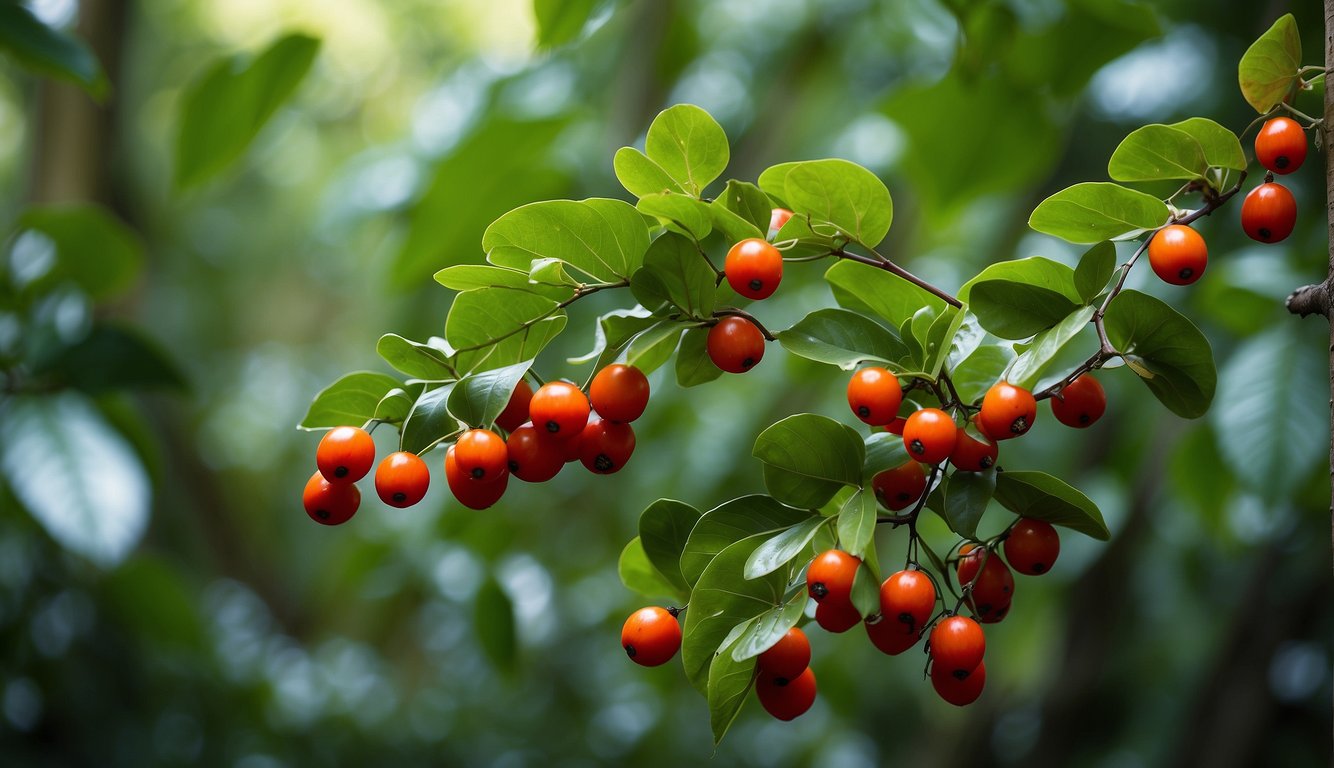
Guarana is a plant native to the Amazon basin and is widely used as a natural stimulant due to its high caffeine content. As a supplement, it has been used to promote energy, weight loss, and athletic performance, as well as cognitive and mental performance.
Energy and Alertness
Paullinia cupana is a popular ingredient in energy drinks and supplements due to its caffeine content. It works by stimulating the central nervous system, which can increase alertness and reduce fatigue. It is also believed to improve reaction time and enhance mood. However, it is important to note that excessive caffeine intake can lead to adverse effects such as anxiety, insomnia, and increased heart rate.
Weight Management
Guarana is often used as a weight loss supplement due to its thermogenic properties. It is believed to boost metabolism and increase the rate at which the body burns calories. Additionally, Paullinia cupana may suppress appetite and reduce cravings, which can aid in weight loss efforts. However, it is important to note that there is limited scientific evidence to support these claims.
Athletic Performance
Guarana is believed to improve athletic performance by increasing endurance and reducing fatigue. It is also thought to enhance physical strength and power output. However, more research is needed to confirm these effects.
Cognitive Functions
Paullinia cupana is believed to enhance cognitive functions such as memory, focus, and concentration. It is thought to work by increasing blood flow to the brain and stimulating the release of neurotransmitters such as dopamine and acetylcholine. However, more research is needed to confirm these effects.
Overall, guarana has a range of potential benefits and uses, particularly in promoting energy, weight loss, and athletic performance, as well as cognitive and mental performance. However, it is important to use it in moderation and consult with a healthcare professional before taking any supplements.
Potential Side Effects
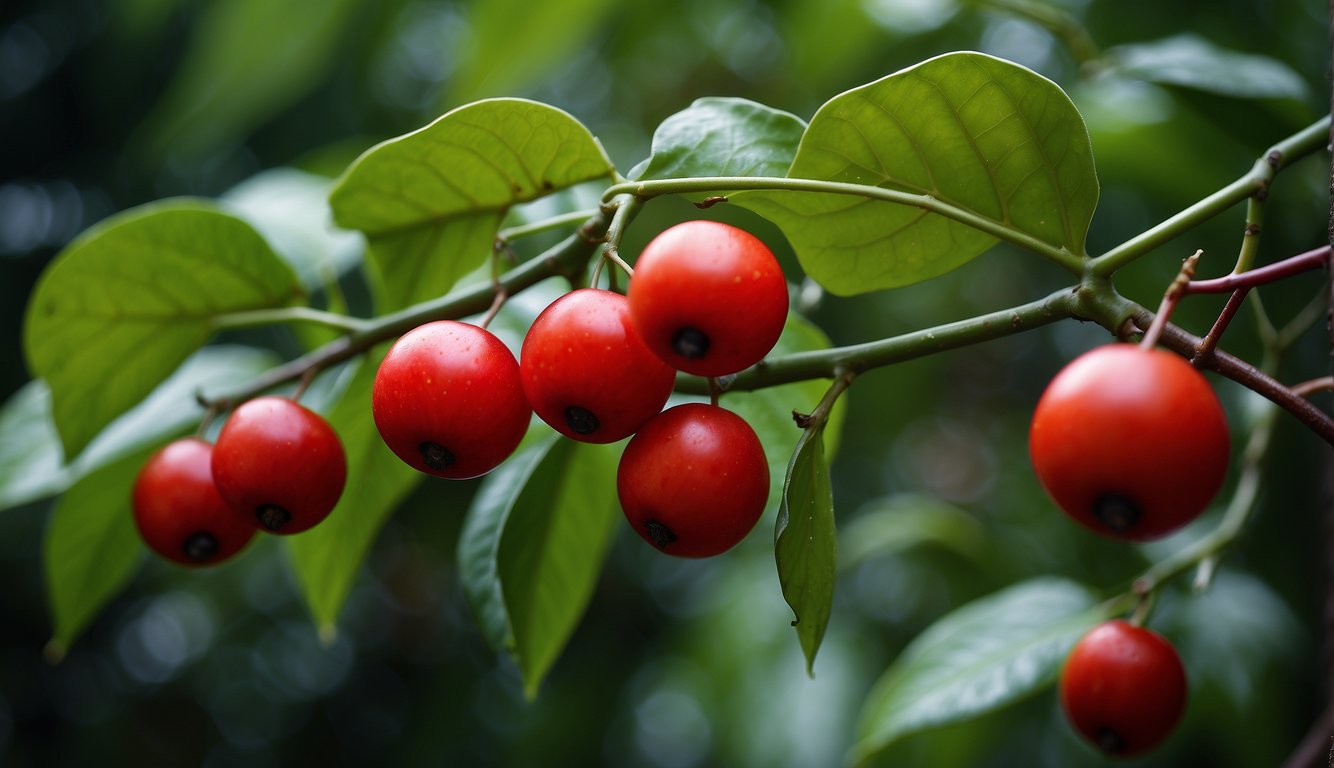
As with any supplement or medication, Guarana can cause potential side effects. Some of the most common side effects are related to its caffeine content. Paullinia cupana contains more caffeine than coffee, and as such, it can cause caffeine sensitivity in some individuals.
Caffeine Sensitivity
Individuals who are sensitive to caffeine may experience anxiety, insomnia, high blood pressure, seizures, heart disease, or other related symptoms. Pregnant women are advised to avoid Guarana due to its high caffeine content, which may lead to complications during pregnancy.
Interactions with Medications
Paullinia cupana may interact with certain medications, including dipyridamole, ephedrine, estrogens, and lithium. These interactions may lead to unwanted side effects, so it is important to talk to a doctor before taking Paullinia cupana if you are on any medications.
Overconsumption Risks
Overconsumption of Guarana can lead to adverse effects, such as diarrhea, vomiting, nausea, increased heart rate, and bleeding disorders. Individuals with irritable bowel syndrome (IBS) should be cautious when taking Paullinia cupana as it may worsen their symptoms.
It is important to note that Paullinia cupana is not regulated by the FDA, and as such, the quality and purity of Guarana supplements may vary. To minimize the risk of side effects, it is recommended to purchase Guarana supplements from a reputable source and to follow the recommended dosage instructions carefully.
Comparative Analysis
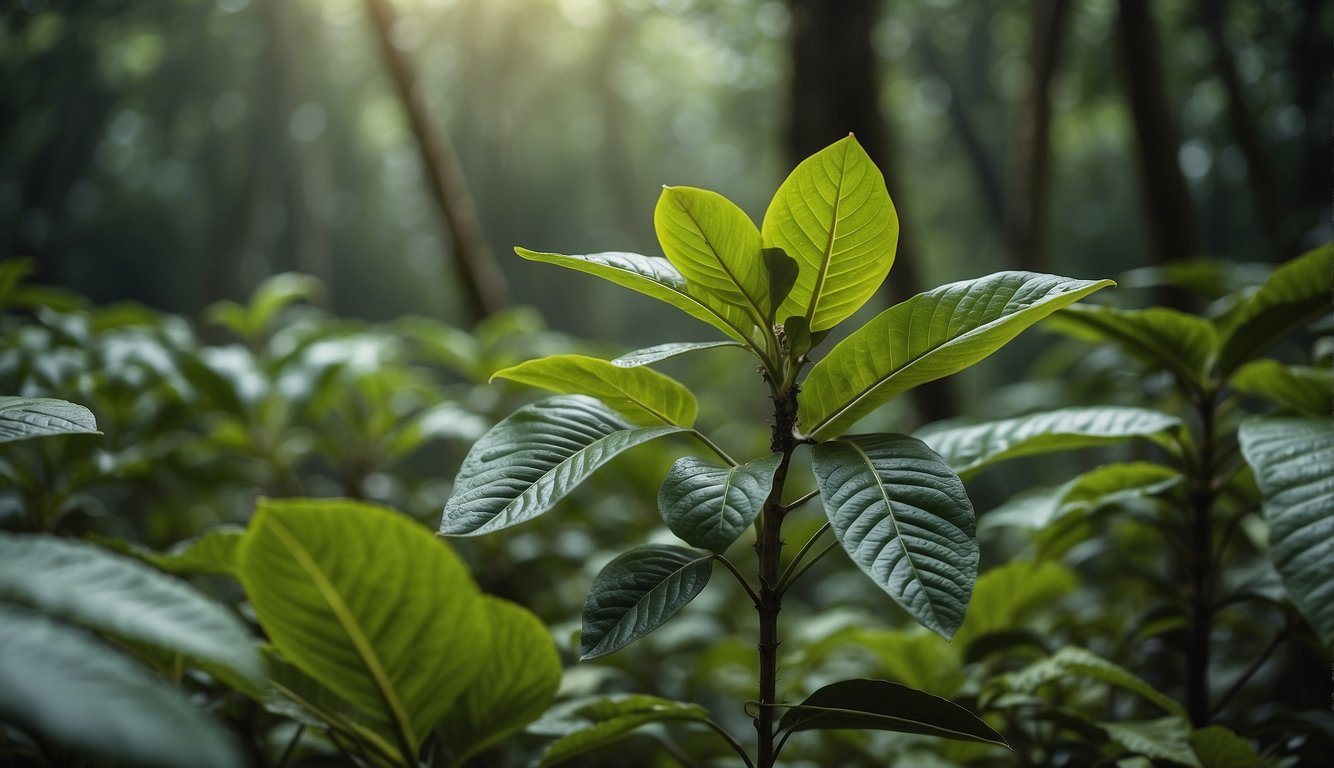
Guarana vs. Other Stimulants
As a natural source of caffeine, Guarana has been shown to provide additional stimulation over caffeine alone. In fact, a study conducted on the planarian model found that Guarana supports an additional short-term stimulation of planarian locomotor velocity (pLmV) over caffeine alone [1].
Compared to other stimulants, Paullinia cupana has a lower caffeine content than coffee but a higher caffeine content than green tea. However, Paullinia cupana also contains other compounds that contribute to its stimulating effects, such as theophylline and theobromine [2].
Caffeine Content Comparison
One of the primary reasons people turn to Guarana as a stimulant is its caffeine content. While Paullinia cupana has a lower caffeine content than coffee, it still contains a significant amount of caffeine. The caffeine content of Guarana can vary depending on the preparation method, but it typically ranges between 3.6% and 5.8% [3].
Compared to other sources of caffeine, Paullinia cupana has a similar caffeine content to yerba mate but a higher caffeine content than green tea. However, the caffeine in Guarana is released more slowly than the caffeine in coffee, providing a longer-lasting source of energy [2].
Paullinia cupana provides a natural source of caffeine and other compounds that contribute to its stimulating effects. While it has a lower caffeine content than coffee, it still contains a significant amount of caffeine and provides a longer-lasting source of energy. Compared to other sources of caffeine, Paullinia cupana has a similar caffeine content to yerba mate but a higher caffeine content than green tea.
[1] https://www.ncbi.nlm.nih.gov/pmc/articles/PMC4399916/
[2] https://ift.onlinelibrary.wiley.com/doi/abs/10.1111/1541-4337.12862
[3] https://www.ncbi.nlm.nih.gov/pmc/articles/PMC9865053/
Regulatory and Safety Considerations
FDA Stance
As a dietary ingredient, Paullinia cupana is regulated by the U.S. Food and Drug Administration (FDA). According to the FDA, guarana is generally recognized as safe (GRAS) for use in foods at concentrations of up to 0.02%, or 200 milligrams per kilogram of body weight per day. However, the FDA has not approved guarana as a drug to prevent or treat any medical condition.
Safe Usage Guidelines
While guarana is considered safe for most people, it is important to use it responsibly and under the guidance of a healthcare provider. Pregnant and breastfeeding women, children, and older adults should exercise caution when using guarana supplements, as there is limited research on its safety in these populations.
When taking Paullinia cupana supplements, it is important to follow the manufacturer’s recommended dosage and usage instructions. Taking too much Paullinia cupana can lead to side effects such as insomnia, anxiety, and heart palpitations. It is also important to be aware of potential interactions with other medications or supplements, and to consult with a pharmacist or healthcare provider before starting a new supplement regimen.
Paullinia cupana is generally considered safe for use as a dietary ingredient, it is important to use it responsibly and under the guidance of a healthcare provider. Pregnant and breastfeeding women, children, and older adults should exercise caution when using Paullinia cupana supplements, and all users should follow the manufacturer’s recommended dosage and usage instructions to avoid potential side effects.
Consumer Information

As a dietary supplement, Paullinia cupana is available in various forms such as capsules, tablets, and powder. Here are some tips on purchasing Guarana supplements:
Purchasing Tips
- Look for a reputable brand that uses high-quality Guarana seed extract in their supplements.
- Check the label to ensure that the product contains an adequate amount of Guarana extract, preferably standardized to contain at least 22% caffeine.
- Choose a supplement that is free from additives, fillers, and artificial ingredients.
- Consider purchasing Paullinia cupana supplements from a trusted retailer or online store.
Supplement Forms
Paullinia cupana supplements are available in different forms, each with its own benefits and drawbacks. Here are the most common forms:
- Capsules: Guarana capsules are a convenient way to take the supplement, as they can be easily swallowed with water. They are also pre-measured, making it easier to control the dosage.
- Tablets: Guarana tablets are similar to capsules but may contain additional ingredients such as binders and fillers. They may also take longer to dissolve in the stomach.
- Powder: Guarana powder can be mixed with water or other beverages to create a drink. It may be more difficult to control the dosage with powder, and it may have a bitter taste.
It is important to follow the recommended dosage guidelines for Guarana supplements to avoid side effects such as nervousness, insomnia, and high blood pressure. As with any dietary supplement, it is recommended to consult with a healthcare professional before taking Paullinia cupana supplements, especially if you have a pre-existing medical condition or are taking any medications.
Future Research and Trends
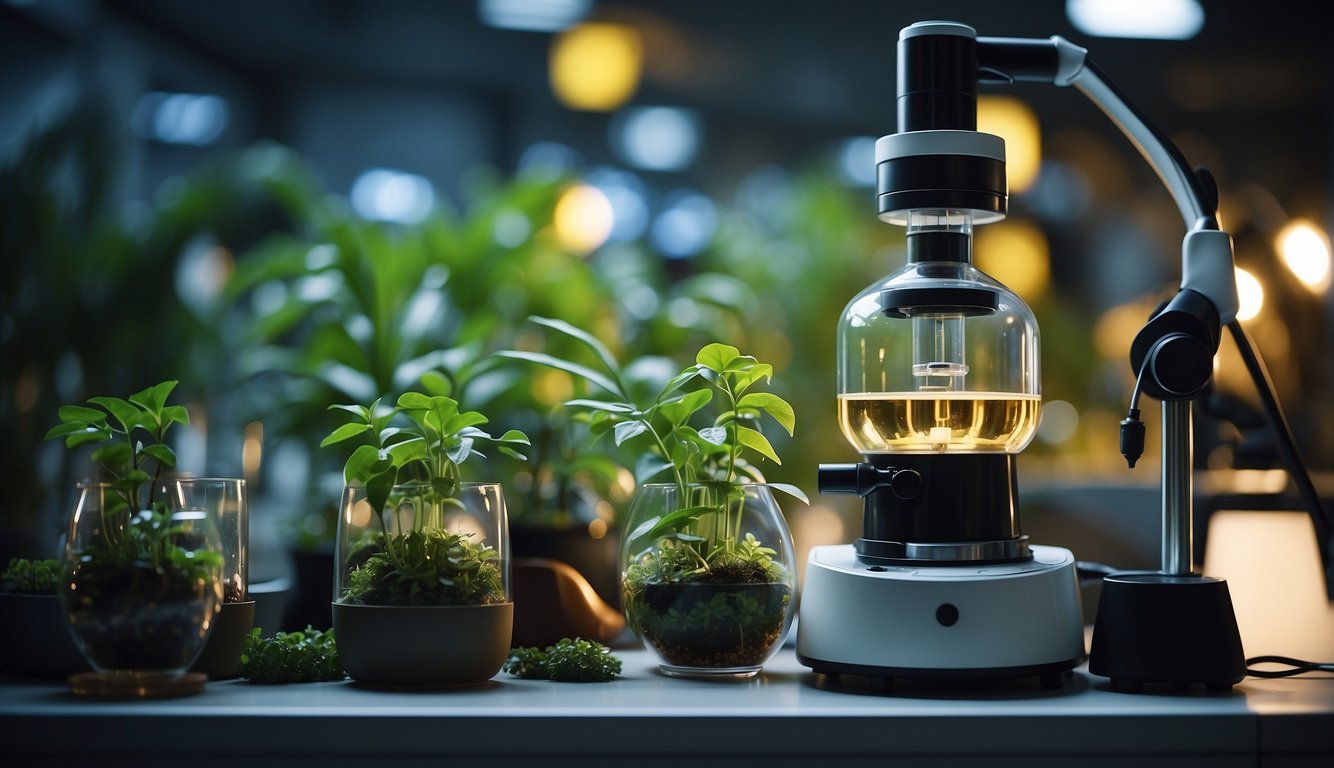
As research on Guarana continues to expand, emerging health benefits are being discovered. Paullinia cupana has been found to have a positive impact on metabolism, heart health, and cholesterol levels. Studies have also shown that Guarana may have anti-cancer properties, making it a promising area for future research.
Emerging Health Benefits
One promising area of research is the potential anti-aging effects of Guarana. Studies have shown that Paullinia cupana may help protect against oxidative stress, a major contributor to the aging process. Additionally, Guarana has been found to improve cognitive function, making it a potential treatment for age-related cognitive decline.
Another exciting area of research is the potential for Guarana to aid in weight loss. Studies have shown that Paullinia cupana can increase metabolism and reduce appetite, making it a potential tool for combating obesity.
Innovations in Product Development
As Paullinia cupana gains popularity, innovations in product development are emerging. One trend is the inclusion of Guarana in functional foods and beverages. Paullinia cupana is being added to energy drinks, sports bars, and even chocolate bars. This allows consumers to enjoy the benefits of Guarana in a convenient and delicious way.
Another trend is the development of Paullinia cupana supplements. Guarana supplements are available in pill form and are marketed as a natural energy booster. These supplements are often combined with other natural ingredients, such as green tea extract or ginseng, to provide a synergistic effect.
Paullinia cupana is a promising natural ingredient with a wide range of potential health benefits. As research continues to expand, we can expect to see even more exciting developments in the future.
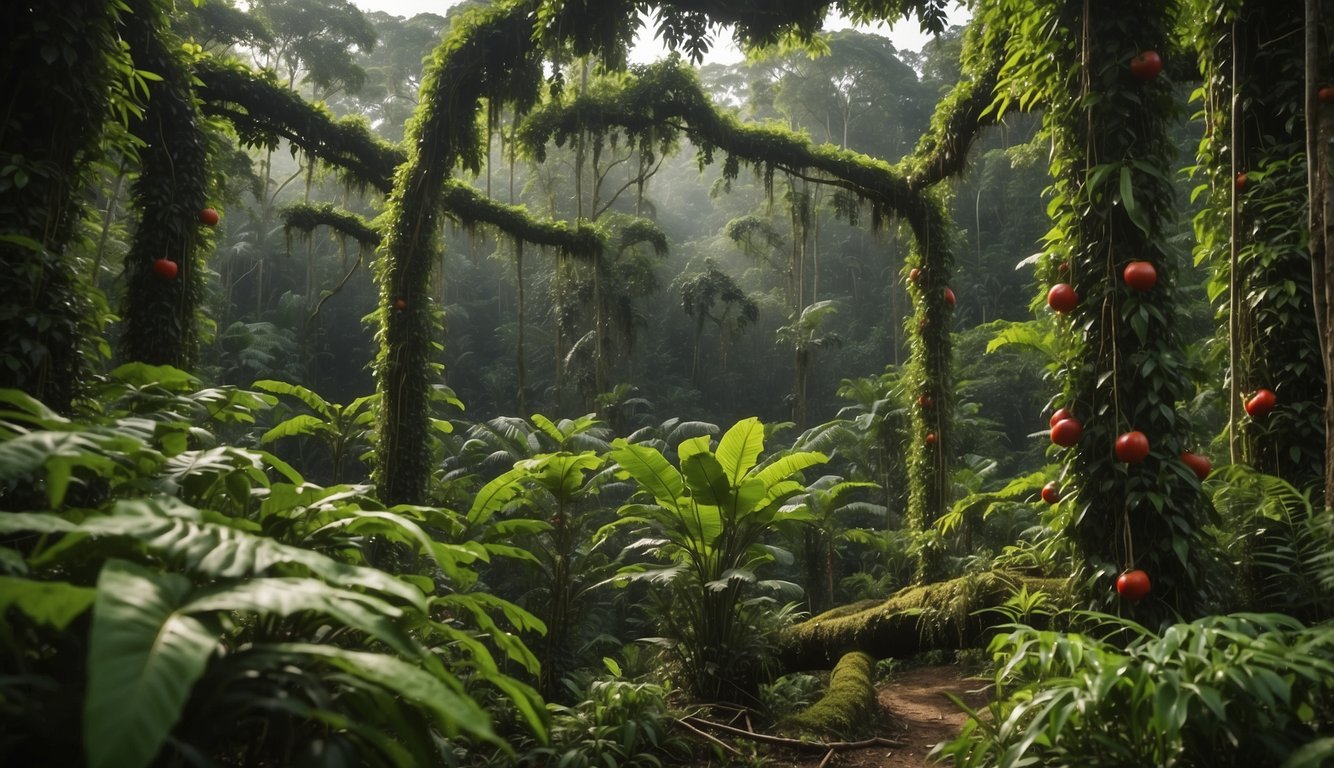
Guarana and TheHerbProf.com: An Energizing Combo!
Guarana Gossip: At TheHerbProf.com, we’re all about guarana! We delve into its energizing properties and its role in herbal medicine.
Herbal Highlights: Learn how guarana can rev up your herbal routine. It’s not just a seed; it’s a wellness wonder!
Culinary Creations: Guarana in the kitchen? Absolutely! We share invigorating recipes that bring out the best in guarana.
Health and Wellness: We’re all about health and wellness, and guarana is a key part of this mission. It’s packed with caffeine and other health-promoting compounds.
Community Connection: Join our community of guarana enthusiasts! Share your journey, learn from others, and make some new friends.
So, whether you’re a guarana guru or just starting your herbal journey, TheHerbProf.com is your trusty companion. Dive in, explore, and stay healthy!
Bodily Influence:
Aphrodisiac, Febrifuge, Narcotic (slightly), Nervine, Nutritive, Stimulant.
Studies:
1. Van Straten, M., (1994) Guarana, England: The CW Daniel Co. Limited
References:
Little Herb Encyclopedia, by Jack Ritchason; N.D., Woodland Publishing Incorporated, 1995
The Ultimate Healing System, Course Manual, Copyright 1985, Don Lepore
Planetary Herbology, Michael Tierra, C.A., N.D., Lotus Press, 1988
Handbook of Medicinal Herbs, by James A. Duke, Pub. CRP Second Edition 2007
The Complete Medicinal Herbal, by Penelope Ody, Published by Dorling Kindersley
Before You Go – Check the Following Articles!
Frequently Asked Questions – Guarana
What are the potential health benefits of consuming guarana?
Paullinia cupana is a plant that has been used for centuries in traditional medicine to treat a variety of ailments. It is known to contain caffeine and other similar chemicals that can stimulate the central nervous system. Some studies suggest that guarana may have antioxidant effects, improve cognitive function, and even have anticancer properties. However, further research is necessary to quantify the exact health benefits of guarana.
How does guarana compare to caffeine in terms of effects and composition?
Guarana contains caffeine, which is a natural stimulant that can improve mental alertness and physical performance. However, the caffeine in Paullinia cupana is released more slowly than the caffeine in coffee, resulting in a longer-lasting effect. In addition, guarana contains other compounds that may enhance the effects of caffeine, such as theobromine and theophylline.
Can guarana enhance sexual health and performance?
There is some evidence to suggest that Paullinia cupana may have aphrodisiac properties and can enhance sexual health and performance. However, more research is needed to confirm these effects.
What are the possible side effects of taking guarana supplements?
While Paullinia cupana is generally considered safe when taken in moderate doses, it can cause some side effects. These may include heart palpitations, high blood pressure, anxiety, insomnia, and stomach irritation. It is important to follow the recommended dosage and to consult a healthcare provider before taking any new supplements.
In what ways is guarana incorporated into energy drinks like Red Bull?
Paullinia cupana is a common ingredient in energy drinks like Red Bull because of its stimulant properties. It is usually added in the form of an extract or powder, and is often combined with other ingredients such as taurine, B vitamins, and sugar.
Is daily consumption of guarana considered safe for most individuals?
While Paullinia cupana is generally considered safe when taken in moderate doses, it is important to consult a healthcare provider before taking any new supplements. Some individuals may be more sensitive to the effects of caffeine and may experience side effects such as heart palpitations or anxiety. In addition, guarana may interact with certain medications and should be avoided by individuals with certain medical conditions such as high blood pressure or heart disease.
